Cockle Diver
Premium Platinum
- Apr 18, 2016
- 143
- 150
- AFL Club
- Port Adelaide
yes he did. Was a State Amateur League representative as well
Thank you Garibaldi Red.
Follow along with the video below to see how to install our site as a web app on your home screen.
Note: This feature may not be available in some browsers.
 BigFooty Tipping Notice Img
BigFooty Tipping Notice Img
Weekly Prize - Join Any Time - Tip Round 0
The Golden Ticket - MCG and Marvel Medallion Club tickets and Corporate Box tickets at the Gabba, MCG and Marvel.
yes he did. Was a State Amateur League representative as well

It remains one of the quirks of our national game — rewarding players for a miss — that bamboozles foreign observers.
The difference in those games that get called football, is you get a higher score for getting the ball over/through the opposition's end line, and a lower score for kicking a goal.I don’t see a behind as a miss at all.
A goal gets extra five points, but a behind still awards a team for getting the ball through the opposition’s endline.
It’s similar to other football codes like rugby, American, and calcio.
It's why it's called a behind.I don’t see a behind as a miss at all.
A goal gets extra five points, but a behind still awards a team for getting the ball through the opposition’s endline.
It’s similar to other football codes like rugby, American, and calcio.
The oddity in Australian is that the endline is tiny, because of the shape of the field.
The difference in those games that get called football, is you get a higher score for getting the ball over/through the opposition's end line, and a lower score for kicking a goal.
Have you ever seen (Irish) Gaelic Football? They basically have a rugby goal set up with a cross bar but also a soccer net. Get the ball under the bar and in the net past the goalie, by hand or foot and its 3 pts for a goal, and kick it thru the goals and the ball goes over the cross bar, its called an over and worth one point.
When Australia plays Ireland in that hybrid rules game called International Rules Series, they introduce behind posts, have 1 pt for a behind, 3pts for an over and 6pts for what I call an undet, ie put the ball in the net and they call a goal.
The usual score might be 1.15.10 = 61 pts.



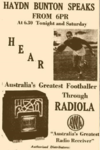

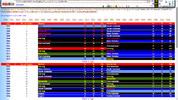
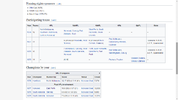
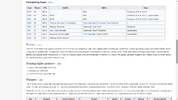
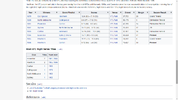
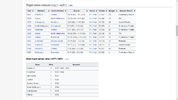
Last night in the sports documentaries thread on the Black Diamond Corner board chiwigi and tribey had a discussion about the 1979 doco on North Melbourne that was bundled up as a DVD with the 1996 Year of the Dogs DVD.
I found its still available to buy from the National Film and Sound Archives.. There are snippets of Russell Ebert in it.
1980, 26 Minutes
A behind-the-scenes look at the Victorian Football League team, North Melbourne, and the preparation and physical build-up that goes into getting a team ready for the premier Australian Rules football competition.
Ron Barassi, from North Melbourne, is shown in his role as a leading VFL coach and we follow the team through its early training sessions to the opening match of the season. The film highlights some of the spectacular action from the North Melbourne-Carlton challenge of 1979.
© 2011 National Film and Sound Archive of Australia.

And thanks to you tuber Gezza 1967 (more in my next post) he has put the full doco up in 3 parts.
And this is the Big Footy thread on the North board from 2010 about the game they include in the doco
1979 North Melbourne Vs Carlton at Arden St.
gnmllG5kauY Not many views so figured a few here haven't seen it. :thumbsu:www.bigfooty.com
Murphy was a seriously tough player, almost un-Sturt like the way he played. Owned a tyre retail outlet before heading to Victoria.I've long held the opinion Barrassi is a bit of a campaigner and some of the above only adds to that opinion.
He first lost me as a `football legend' in a late 1960's end of season game at Adelaide oval against Sturt when he was captain coach of Carlton.
It was fairly early in the game and he was roughing up a few of the Sturt smaller types when a bloke named John Murphy decided enough was enough and gave Ron a bit of a seeing to.
Murphy was a very tough on baller type, he was way too good for Barrassi during their altercation and Ron ended up on the turf.
Barrassi's response was to spit the dummy big time and walk off the ground, resulting in him taking no further part in the game.
He copped plenty from the mainly Sturt supporting crowd and later in the press, and it was well deserved.
From memory Sturt won that game by something like 10 goals.
Looks like The Walking Gasometer Mick NolanWhen Living in Melbourne from mid 1979 to 1980 I often went down and watched North Melbourne play. This photograph from the sun way back when
Iconic Players
View attachment 1318493
Agreed RJ, Murphy definitely didn't fit the Sturt image of the time.Murphy was a seriously tough player, almost un-Sturt like the way he played. Owned a tyre retail outlet before heading to Victoria.
1958, a night game at Norwood between Port and a Victorian side whose name I do not recall. About the only thing I can remember was Rex Johns was playing.
Agreed RJ, Murphy definitely didn't fit the Sturt image of the time.
I reckon that 1958 night game was against Melbourne, after the Maggies had won their 5th in a row, and they were the dominant team in the then VFL.
My family was still living in the sticks back then so we didn't go, but I think it was the game where the crowd got a tad excited and pushed a section of the fence over at the Parade end, and Melbourne ended up winning by a couple of points.
Assuming Barrassi played, his opponent would have been either Geoff Motley or Chicken Hayes as both had good records against him in interstate footy, and I believe that after he retired Barrassi acknowledged Motley as one of his toughest opponents.












